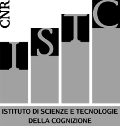Background: Basal ganglia and thalamus play a central role, via the
cortico-basal ganglia-thalamus-cortical loop, in the processing of the
neuronal signal from and to the cerebral cortex. Metabolic alterations in
the neocortex, causing proportional regional cerebral blood flow (rCBF)
changes, affect neuronal signal also in such structures. The aim of this
study was to investigate the possibility of using the rCBF of the central
structures in discriminating Alzheimer Disease (AD) and Unipolar Depression
(UNI) patients from normal controls (CTR).
Methods: 47 AD patients, 70 UNI patients and 66 CTR were included in the
study. rCBF was assessed by 99m-Tc-HMPAO and using a three-headed gamma
camera. A standardised brain atlas was used to define volumes of interest
corresponding to nc. caudatus, putamen and thalamus. Analysis of variance
(ANOVA) was used to test the significance of the differences in flow and
data were covariated for age. Receiver Operating Characteristic (ROC)
curves were implemented to evaluate the ability of the rCBF in the
different structures to discriminate between the groups.
Results: ANOVA showed a significant overall rCBF group difference
(p<0.001). As compared to CTR, rCBF in nc. caudatus and thalamus decreased
in AD and increased in UNI. The blood flow in putamen was significantly
increased only in the CTR/UNI comparison (p<0.001). Thalamus blood flow
significantly differed in the CTR/AD (p<0.02) and CTR/UNI (p< 0.001)
comparisons. Nc. caudatus blood flow significantly discriminated all three
groups (CTR/AD:p<0.001; CTR/UNI: p<0.001; AD/UNI:p<0.01). According to ROC
curves, nc. caudatus correctly categorised 74% of the individuals in the
CTR-AD group pair and 72% in the CRT-UNI group pair.
Conclusions: The blood flow in nc. caudatus and thalamus reflected
corresponding changes in cortical regions in both AD and UNI. The decreased
perfusion in the temporo-parietal cortex of the AD patients and the
increased blood flow in the fronto-temporal cortex of the UNI patients were
concomitant in nc. caudatus and thalamus. This is consistent with the
anatomical path of the cortico-basal ganglia-thalamus-cortical loop
projecting the fronto-temporo-parietal association cortex fibres in a
segregated manner to nc. caudatus and thalamus. The putamen receives fibres
mainly from motor and pre-motor cortices not involved in AD.
Value of Nucleus Caudatus and Thalamus SPECT rCBF in discriminating among Alzheimer Disease, Unipolar Depression and normal individuals
Publication type:
Articolo
Publisher:
Springer., Heidelberg;, Germania
Source:
European journal of nuclear medicine and molecular imaging (Print) 29 (2002): s134.
info:cnr-pdr/source/autori:Pagani M., Gardner A., Salmaso D., Sanchez-Crespo A., Jonsson C., Ramstrom C., Wagner A., Jacobsson H., Larsson S.A../titolo:Value of Nucleus Caudatus and Thalamus SPECT rCBF in discriminating among Alzheimer Disease, Unipolar D
Date:
2002
Resource Identifier:
http://www.cnr.it/prodotto/i/46701

